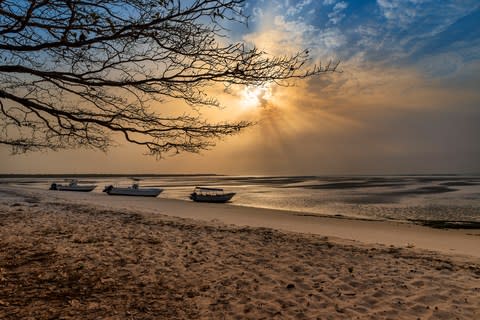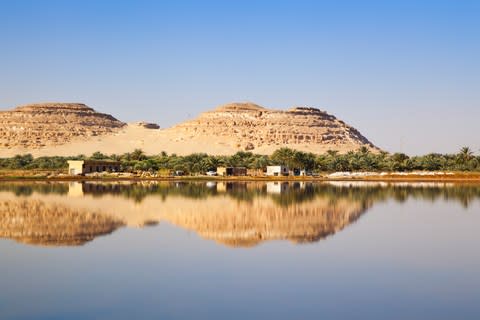The strangest places you've visited
Lonely Planet founder Tony Wheeler recounted some of his strangest trips for Telegraph Travel last week, prompting a flurry of emails from readers. Here are some of the best.
Blinded by the midnight sun at Myvatn
Iceland: a treeless land of sulphur springs and spouting geysers; of boiling mud pools and hot volcanic stones; a land where a deep cleft in the countryside, the Mid-Atlantic Ridge, separates North America from Eurasia. Peering down into the expanding divide is unnerving.
At Myvatn (“midge-water”), a large shallow lake, we were told to walk with our arms above our heads because the swarms of black flies would then feed on our fingers, not our faces. It seemed to work.
From there we flew in a tiny Piper Chieftain, swooping low over an unfamiliar landscape of sparkling glaciers that looked like huge, frozen waves caught in the act of tumbling.
It was a late night in June as we approached Reykjavik, and yet the midnight sun reflecting on the ice below was so brilliant that we needed to wear sunglasses.
Jill Simmons from Buckinghamshire wins a £500 Holiday Cottages voucher
Under armed guard in the DRC
Leaving Brussels, there was no going back; I was headed to Kinshasa, capital of the Democratic Republic of the Congo. Eight hours later we were met at the airport by trucks loaded with heavily armed soldiers, as the Belgian foreign minister was in our party. With one lorry behind and one in front, we headed into the city, the inky night punctuated by small roadside fires.
More soldiers with rifles ringed our hotel, sitting uneasily amid the obvious poverty of Kinshasa, replete with women grinding UN-donated flour on the pavement to make bread.
Next morning, we went down to the Congo river where UN soldiers in blue berets were loading a boat with supplies. Dignitaries made speeches, a brass band played and the boat steamed from the quayside. It was as if I had stumbled into a scene from Joseph Conrad’s Heart of Darkness.
Simon Warburton, Worcester
The only tourist in Guinea-Bissau
Having collected my visa, I bought a bus ticket from Senegal and arrived in Guinea-Bissau. There were no other tourists and no postcards to send home. Bissau was little changed from when the Portuguese left in 1974. The lack of tourists meant that the hotel I had earmarked was closed, so I slept at a fishermen’s hostel instead.
Next day, I left on the “ferry”, a massive canoe with the crew bailing out water so it would not sink. I caught my bus back into Senegal. Later, I found out that, as a “Narco-state”, Guinea-Bissau carried a Foreign Office warning – rendering my travel insurance invalid.
Philip Wharmby, Bury

The quirks of Turkmenistan
I visited Turkmenistan in 2010 – a strange country run by a dictator who is president for life. To visit, you have to be invited by someone who is already there (my daughter was working in the country), the first of many strange quirks.
As your plane approaches the capital, Ashgabat, the white marble buildings look spectacular but none are occupied because they haven’t been built to withstand earthquakes. I visited two mosques, but was told frequent visits are discouraged. In this dry, hot country, irrigation channels are filled from the tap.
A day trip took us into the hills to visit Norhr, a traditional village where the microclimate allowed grapes, sweetcorn and other exotics to grow. The graves were marked by rams’ horns. I was invited to try weaving, because a girl who can weave is able to command a higher price as a bride. This was so different from Ashgabat – and from home.
Lesley Martin, West Lothian
Seashells in the desert, 200 miles from the sea
We ate lunch in a dilapidated shipping container 200 miles inland – the only shade in the desert, halfway between the oases of Siwa and Bahariya.
Thirty miles from the Libyan border, Siwa is one of the most remote settlements in Egypt. The culture of Siwa is intriguing, having its own language and customs which the welcoming Siwans intend to preserve.
The old town was abandoned 100 years ago and is a crumbling mud-brick ruin towering above the newer town. All around is grandiose scenery which is inhospitable but wondrously diverse: rocky, sandy and in one place with remnants of seashells the size of £2 coins, which jangled like money.
Christine Partington, Wiltshire

Muskrat for dinner and howling huskies
I arrived in Arctic Canada as the only passenger on a small aircraft landing on a frozen river. Visiting friends in Aklavik in March, with daylight until 10pm and a temperature of -17F (-27C), was unforgettable. For the next 10 days I wore two sweaters, a hooded parka, mittens and moose-hide mukluks on my feet, along with three pairs of socks, whenever I went outside.
Memories include travelling by Ski-Doo to visit a family who trapped muskrats (which we later ate, smoked, with bread and a cup of tea in their snug cabin), getting caught in a blizzard and having to dig ourselves out of snow drifts which looked like whipped meringue. We watched children enjoying hot dogs and marshmallows in the snow, with huskies howling all around. Older women wearing “Mother Hubbard” outfits welcomed us into their simple homes where caribou hides hung outside, with the distant mountains and vivid blue sky as a backdrop.
Margaret Inkpen, Lincoln
Rebellion made for an unnerving visit
We travelled to Cairo, Egypt, at the end of June 2013 for a pre-cruise stay at a five-star hotel, with a day for sightseeing included. The timing could not have been worse. As we left the airport, all was eerily quiet. The taxi driver explained that there had been trouble in Tahrir Square the evening before. Their leader was being ousted.
Our beautiful hotel was in darkness, while arguments and fighting could be heard in the foyer as we were quickly ushered to the lift. A truculent local guide was assigned the next morning to take us to an empty museum and the deserted pyramids. Desperate hawkers surrounded us in a bid to sell their wares, since we were the only visitors.
We escaped to Hurghada and our waiting cruise ship the following evening, feeling sorry for those who relied on tourism for a living. I did enjoy the tranquillity of the Egyptian Museum, despite the unnerving circumstances.
Tamsyn Lewis, Cornwall

